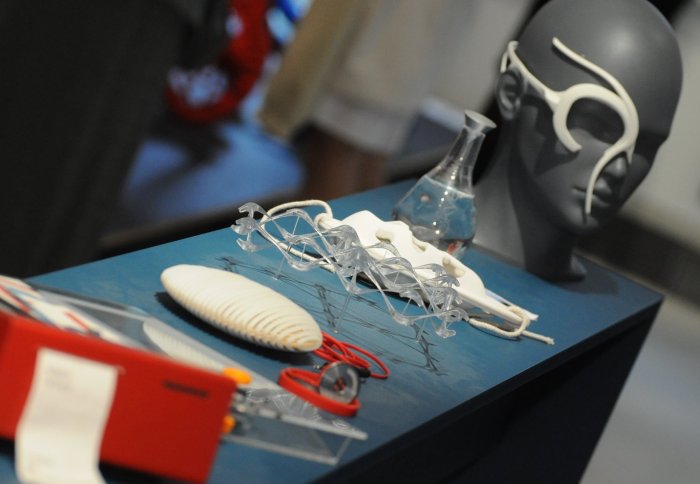

A tool to create 3D textiles and a device to combat ocean acidification in coral reefs are some of the ideas on display at this week's Imperial Show.
The show, which runs until Thursday 3 July 2014 in the College Main Entrance, features nearly 50 different devices developed by students on the Innovation Design Engineering (IDE) course run jointly by Imperial and the Royal College of Art.
The devices on display here today bring together the best in design and engineering skills we develop on the IDE course.
– Professor Peter Childs
Course Director
Amongst the devices on display is the Pretender Project. The Project uses a series of available technologies such as virtual reality headsets, microphones and wide-angled cameras to give the wearer the sensation that they are in another person’s body. It aims to provide an experience of the world as seen through another person's eyes - allowing designers and planners to sample their projects from an alternative perspective.
Course Director Professor Peter Childs said: “The devices on display here today bring together the best in design and engineering skills we develop on the IDE course.
“We have around 600 IDE alumni now who have gone on to set up their own enterprises or ended up working for international technology companies like LG, Apple and Sony. You’ll definitely be seeing more of these students and their ideas in the future.”
This kind of idea is very relevant right now, with grassroots political campaigns combining online and local campaigning. I think this is the future of activism.
– Pierre Paslier
IDE Student
Another technology on display is student Pierre Paslier’s Advanced Activism project. The project prototypes include a number of devices, such as a quadcopter designed for fly stickering art and campaign messages on ordinarily inaccessible surfaces and structures and 3D printed stencils used to turn a bike wheel into a mobile printing device.
Pierre said: “Our toolbox is about providing creative ways for people to get their messages out there.
“This kind of idea is very relevant right now, with grassroots political campaigns combining online and local campaigning. I think this is the future of activism.”
Other highlights on display include a prototype material that mimics photosynthesis to convert carbon dioxide into oxygen as well as a wearable device that sends the user sensory information about the environment they are moving through, for example warning of a dangerous neighbourhood ahead by chilling the skin.
Article text (excluding photos or graphics) © Imperial College London.
Photos and graphics subject to third party copyright used with permission or © Imperial College London.
Reporter
Jon Narcross
Communications and Public Affairs

Contact details
Email: press.office@imperial.ac.uk
Show all stories by this author
Leave a comment
Your comment may be published, displaying your name as you provide it, unless you request otherwise. Your contact details will never be published.





Comments
Comments are loading...